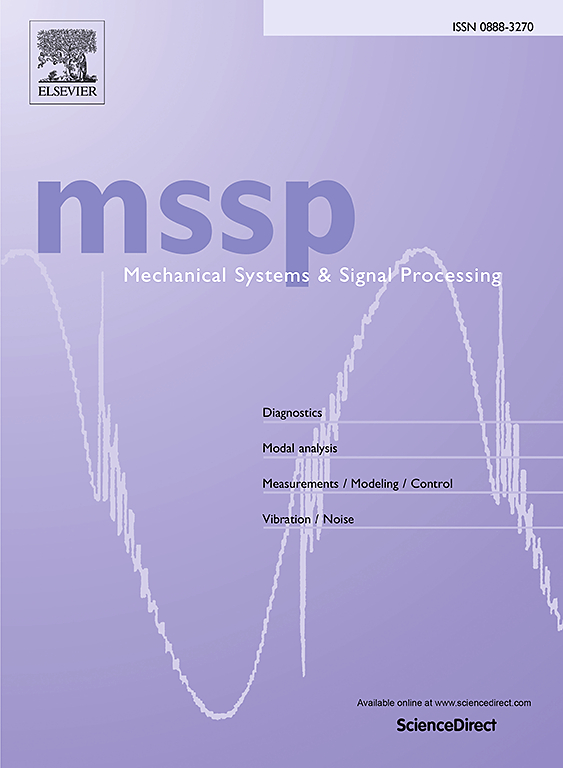Stereo-point tracking of inherent structural features for 3D computer vision measurements
IF 7.9
1区 工程技术
Q1 ENGINEERING, MECHANICAL
引用次数: 0
Abstract
Computer vision techniques have gained popularity for structural health monitoring and structural dynamics thanks to advancements in camera technology and computational capability. Among these techniques, three-dimensional-digital image correlation (3D-DIC) and 3D-point tracking (3D-PT) have been used as substitutes for traditional contact-based methods. To produce accurate measurements, 3D-DIC and 3D-PT require high-contrast patterns such as stochastic speckles or fabricated optical targets on the surface of the targeted structure. However, when large-scale engineering structures such as bridges and wind turbines must be analyzed, applying the high-contrast speckles/targets may not always be feasible, thus limiting the applicability of 3D-DIC and 3D-PT. This research develops an approach to identify and track inherent features such as bolts, letters, stains, rusted patches, and holes that are already present on the structure. To achieve this goal, the Augmented Convex Polygon of Gradients (ACPG), an algorithm based on a novel custom interpolation method, is developed to track the motion of inherent structural features. In this research, the performance of the proposed ACPG algorithm is compared with traditional 3D-PT measurements and contact-based sensors in laboratory and field tests. Results show that measurements obtained with the ACPG algorithm are in excellent agreement with those obtained with traditional approaches, yielding accuracy between 93 % and 99 %. The outcomes of this research prove that the proposed ACPG algorithm can extend the applicability of computer vision techniques for 3D measurements of real-world structures.
三维计算机视觉测量中固有结构特征的立体点跟踪
由于相机技术和计算能力的进步,计算机视觉技术在结构健康监测和结构动力学方面得到了广泛的应用。在这些技术中,三维数字图像相关(3D-DIC)和三维点跟踪(3D-PT)已被用作传统的基于接触的方法的替代品。为了产生精确的测量结果,3D-DIC和3D-PT需要高对比度的图案,例如目标结构表面上的随机斑点或制造的光学目标。然而,当必须分析大型工程结构(如桥梁和风力涡轮机)时,应用高对比度斑点/目标可能并不总是可行的,从而限制了3D-DIC和3D-PT的适用性。本研究开发了一种方法来识别和跟踪结构上已经存在的固有特征,如螺栓、字母、污渍、生锈的补丁和孔。为了实现这一目标,提出了一种基于自定义插值方法的梯度增广凸多边形(Augmented Convex Polygon of Gradients, ACPG)算法来跟踪固有结构特征的运动。在本研究中,在实验室和现场测试中,将所提出的ACPG算法与传统的3D-PT测量和基于接触式传感器的性能进行了比较。结果表明,用ACPG算法得到的测量结果与传统方法的测量结果非常吻合,准确度在93% ~ 99%之间。研究结果表明,所提出的ACPG算法可以扩展计算机视觉技术在现实世界结构三维测量中的适用性。
本文章由计算机程序翻译,如有差异,请以英文原文为准。
求助全文
约1分钟内获得全文
求助全文
来源期刊

Mechanical Systems and Signal Processing
工程技术-工程:机械
CiteScore
14.80
自引率
13.10%
发文量
1183
审稿时长
5.4 months
期刊介绍:
Journal Name: Mechanical Systems and Signal Processing (MSSP)
Interdisciplinary Focus:
Mechanical, Aerospace, and Civil Engineering
Purpose:Reporting scientific advancements of the highest quality
Arising from new techniques in sensing, instrumentation, signal processing, modelling, and control of dynamic systems
 求助内容:
求助内容: 应助结果提醒方式:
应助结果提醒方式:


